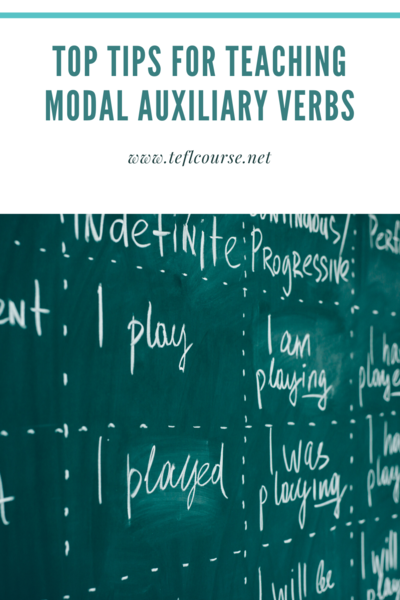Top Tips for Teaching Modal Auxiliary Verbs

While teaching a new language, we, as a teacher need to concentrate on some very important skills. such as writing, reading, speaking and listening. If we miss one of these skills, it will mean that we don't provide the needed knowledge for our students., and all these are equally important. Today I am going to speak about English grammar and my main point will be the modal auxiliary verbs and how to teach them as a grammar rule.
Table of Contents
Definition of the Auxiliary Verbs
The modal auxiliary verbs are as follows.
So how can we teach these verbs for the students to understand their differences and their usage:
To show action in the past, can become could
Do you want to teach English abroad? Take a TEFL course!
This post was written by our TEFL certification graduate Edgar V. Please note that this blog post might not necessarily represent the beliefs or opinions of ITTT.
Definition of the Auxiliary Verbs
These verbs are used to show willingness, capability, necessity or possibility. And like other verbs, the modal verbs also show if the action happened in the past, present or future.
The modal auxiliary verbs are as follows.
- Can / Could
- May/might
- Shall/
- will/would
- ought/must
All these models can also indicate the question and negative forms.

Also Read: Games in the Classroom in Correlation with Teacher's Personality and Situation
So how can we teach these verbs for the students to understand their differences and their usage:
Examples of Usage of Can
After introducing the modal verbs we need to show which of them indicates possibility, suggestion, advice, and obligation. And for it, the most acceptable way is giving examples.So the modal verb can means that someone is able to something. for example, I can help you. (means he can help) the modal verb here is can, which is used in the basic or infinitive form without the particle to.
And also, the most important thing is that, while using modal verbs in the third person, singular no -S or -ES is added as we do in the present simple.
For example, He can help you. This is not correct, we need to say: He can help you.For making an interrogative sentence we need to bring the modal verb to the beginning of the sentence.
For example: Can I help you?
And for the negative, we just add not to the modal verb, such as:I can not help you or I can't help you.
Also Read: How much can I earn teaching English abroad?
To show action in the past, can become could
For example:I could help her, but she didn't want to.It could have the same usage as can but only shows a past action.The equivalent for can, which we use to show a future action. With will we use be able.
For example:I will be able to help you if you want.And not I will help, will and can can't be used together.
So this is the example of the modal verb Can.
After explaining the usage of it, we need to make the students use the modal verb. The best solution for it is to let them make sentences of their own, by asking them guided questions.
For example:What can you do to develop your speaking skills?
Do you want to teach English abroad? Take a TEFL course!
And when we see that they are confident in the usage, we can go on asking them to make the negative form.After all these activities we will let them work independently and make sentences using modal verbs by putting them into groups or making pair works. This is one of the ways we can teach the modal auxiliary verbs.
Apply now & get certified to teach english abroad!
Speak with an ITTT advisor today to put together your personal plan for teaching English abroad.
Send us an email or call us toll-free at 1-800-490-0531 to speak with an ITTT advisor today.
Related Articles:
- 10 Tips to Help You Enjoy Your TEFL Course
- The Importance of Lesson Planning for ESL Teaching
- 5 Keywords to Increase Your Confidence in the Classroom as a Teacher
- Top 10 Qualities Every Great Teacher Should Have
- 5 Reasons Why Teaching Abroad is Better Than Studying Abroad
- 10 Questions You Need to Ask Before Enrolling In a TEFL Course




